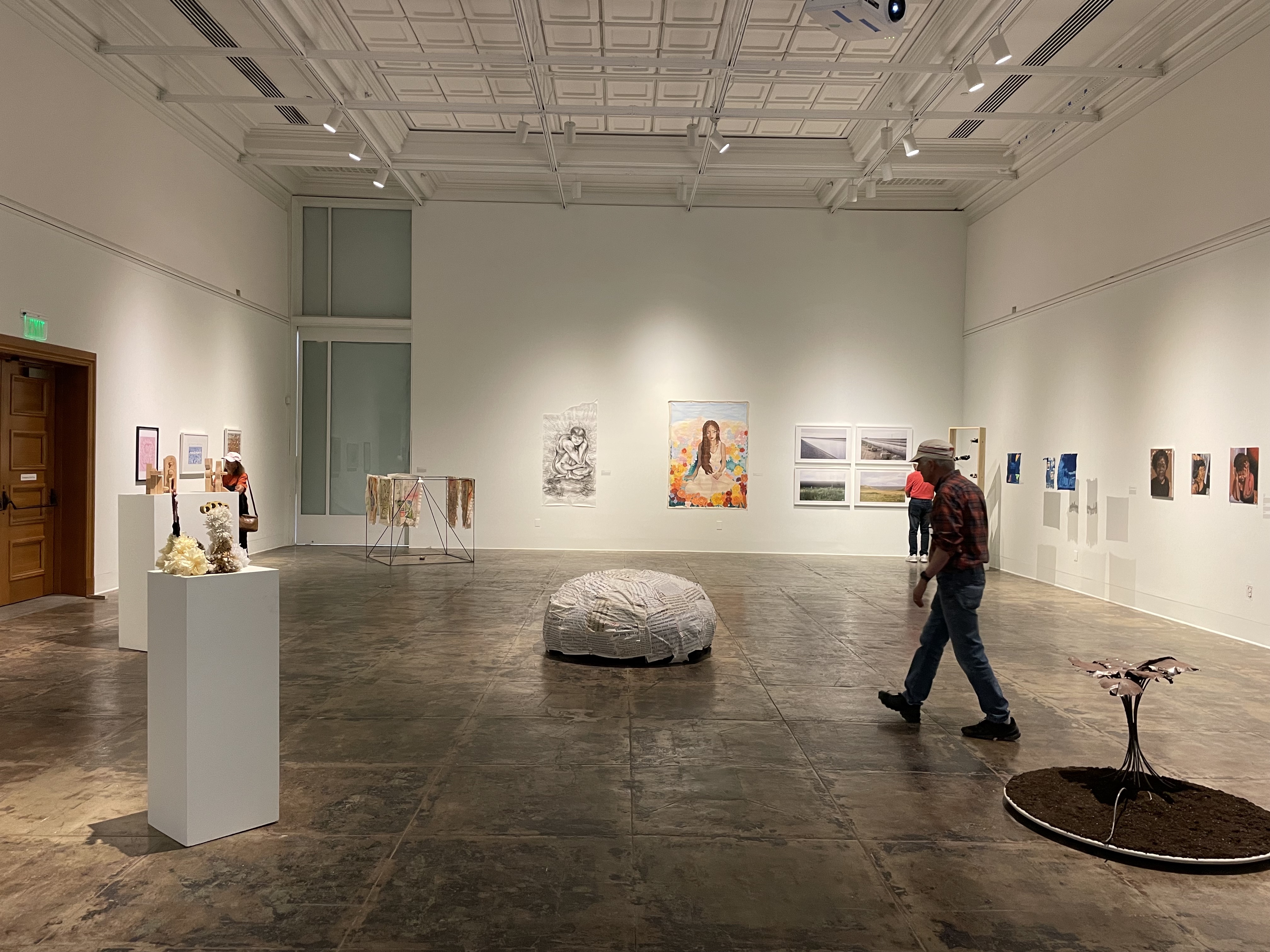On Tuesday, the department of art and art history announced 27 student artists whose works were selected for the ninth annual Undergraduate Juried Exhibition, “Panoramic Enlightenment.” The artworks are currently displayed in the Stanford Art Gallery through Dec. 8.
Each exhibition piece was selected from department-wide submissions by jurors Enrique Chagoya, Maggie Dethloff and Gabriel Harrison. Chagoya is a professor in the art and art history department, Dethloff is the assistant curator of photography and new media at the Cantor Arts Center and Harrison is the associate director and curator of galleries and exhibitions.
The selection of multi-media artworks showcase the artists’ wide range of interests, with overarching themes of race, culture and sexuality.
“I’m constantly inspired by the amazing art produced by my friends and other students at Stanford. Everyone brings a different story to the table,” said Bryan Defjan ’24, who had two pieces selected for the exhibit.
One of the most striking pieces was created by Ava DeConcini ’25. A bean bag, covered by patches of cloth with student-written messages about sexual consent printed on them, was placed at the very center of the gallery. It was the only work that included an aspect of physical audience interaction, inviting the audience to touch and sit on it.
“I asked students to share times they felt uncomfortable and received hundreds of stories describing the same sensation: realizing you want to get out of a situation you had anticipated feeling more comfortable in and not immediately knowing how to do so gracefully,” wrote DeConcini in a note accompanying the installation.
The work, titled “How It Feels” (2023), uses the bean bag as a metaphor for sexual discomfort. One sits on the inviting bean bag only to slowly sink into the deceiving softness, hard to escape. I marveled at DeConcini’s ability to infuse meaning into a mundane object.
Student artists grappled with their cultural heritage in many exhibition pieces. Tyra Blackwater ’23 narrates timeless bonds of kinship among Native Americans through “They are Taking Good Care of Us” (2023), an installation that incorporated the traditional Native art form of weavings. Sky Walker’s ’24 paper collage “A Spectacle” (2022) features a group of people observing several pairs of dark-toned legs suspended in the air, conveying how “Black bodies often get objectified, appropriated, hyper-sexualized and commodified.”

L. Song Wu’s ’24 “Fairy Sexy Style” (2023) resonated with me most strongly. In the forefront of the oil painting is an Asian man, staring fearlessly into the observer’s eyes and wearing a shirt with the text “Fairy Sexy Style” printed on it.
“Sometimes I am the Westerner laughing at these images, and other times I am the Chinese being laughed at,” Wu wrote, referencing situations in which Asians wear garments with “bad English” printed on them.
Being of Asian origin myself, I was amused by the humor and relatability of the situation portrayed with comforting broad strokes and blunt colors. The painting made me question where I am positioned in this identity continuum. Would I empathize with the oblivious protagonist, who is unaware of himself being the butt of the joke, or would I mock him along with the others?

Other artworks interact with the human body in intriguing and literal ways. Jenny Jeewon Youm ’26 traced her body on paper in a life-sized charcoal drawing, “In the Guise of Toughness” (2023). Swirling shoe prints seem to be stepping on the charcoal figure from all directions, while the figure wraps their arms tightly around their body in an expression of vulnerability. The charcoal lines and the uneven torn mark on the paper’s top edge — as if the sheet was carelessly torn from a roll — were unapologetically raw.
In the Undergraduate Juried Exhibition, art strips humans of all their disguise. The exhibition also gives artists a safe space to express and celebrate each other.
“After having an online freshman year, being part of in-person exhibitions like this makes me feel like I’m part of a larger creative community,” Defjan said.
“The most gratifying part of being included in this exhibition is that it reaffirms my sense of membership in a community of artists at Stanford,” said Jackie Liu ’25, creator of oil painting “Creating Content” (2023). “We may be small, but we are definitely mighty.”
Editor’s Note: This article is a review and includes subjective thoughts, opinions and critiques.
